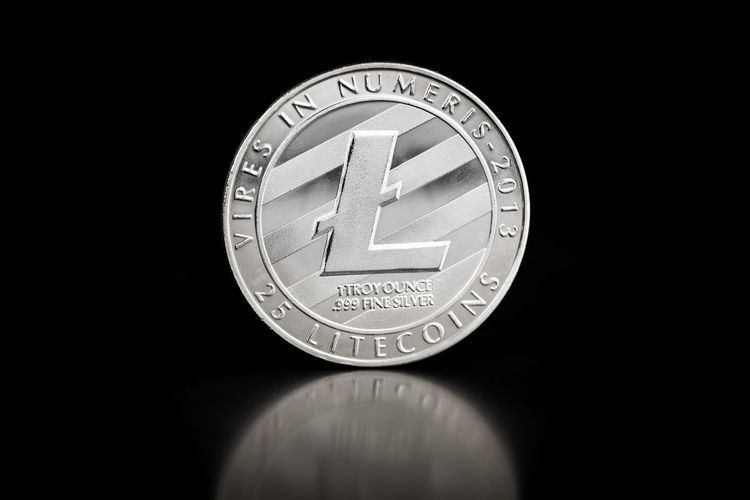0.001 mLTC (millicoin) 0.00000001 Litoshi | 0.000001 µLTC (microcoin) Symbol LTC, Ł | |
Plural Litecoin, Litecoins, LTCs Date of introduction 7 October 2011; (2011-10-07) | ||

Litecoin (LTC or Ł) is a peer-to-peer cryptocurrency and open source software project released under the MIT/X11 license. Inspired by and technically nearly identical to bitcoin (BTC), Litecoin creation and transfer is based on an open source protocol and is not managed by any central authority.
Contents
After Bitcoin, Ethereum, Dash, Ripple and Monero, Litecoin is the sixth-largest true cryptocurrency by market capitalization.
History
Litecoin was released via an open-source client on GitHub on October 7, 2011 by Charles Lee, a former Google employee. It was a fork of the Bitcoin-Qt client, differing primarily by having a decreased block generation time, increased maximum number of coins, different hashing algorithm (scrypt, instead of SHA-256), and a slightly modified GUI.
During the month of November 2013, the aggregate value of Litecoin experienced massive growth which included a 100% leap within 24 hours.
Litecoin reached a $1 billion marketcap in November 2013. As of Dec 2016, its market capitalization is US$177,400,000 with the price at $3.60 levels.
Development
Litecoin version 0.8.5.1 was released in November 2013. The release included fixes for vulnerabilities and added enhanced security to the Litecoin network.
The Litecoin developer team released version 0.8.6.1 in early December 2013. The new version offered a 20x reduction in transaction fees, along with other security and performance improvements in the client and network. The source code and binaries were released early to people in the "#litecoin" IRC channel, on the official Litecoin forums, and on Reddit, with information for power users to add a Litecoin supernode to the configuration file, while the main site was to be updated after enough of the network was running the new version. This release method was used to ensure that the low fee transactions from version 0.8.6.1 clients would not be delayed by clients running older versions.
In April 2014, a new version of Litecoin was released, version 0.8.7.1, which fixed some minor issues along with an important fix related to the Heartbleed security bug.
Differences from Bitcoin
Litecoin offers three key differences from Bitcoin.
The original intended purpose of using Scrypt was to allow miners to mine both Bitcoin and Litecoin at the same time. The choice to use scrypt was also partially to avoid giving advantage to video card (GPU), FPGA and ASIC miners over CPU miners.
Due to Litecoin's use of the scrypt algorithm, FPGA and ASIC devices made for mining Litecoin are more complicated to create and more expensive to produce than they are for bitcoin, which uses SHA-256.This is widely due to the Scrypt hashing scheme being more memory intensive; increasing memory requirements for ASICs and FPGAs.
Transactions
A peer-to-peer network similar to bitcoin's handles Litecoin's transactions, balances and issuance through scrypt, the proof-of-work scheme (Litecoins are issued when a small enough hash value is found, at which point a block is created, the process of finding these hashes and creating blocks is called mining). The issuing rate forms a geometric series, and the rate halves every 840,000 blocks, roughly every four years, reaching a final total of 84 million LTC.
Addresses
Payments in the Litecoin network are made to addresses, which are Base58-encoded hashes of users' public keys. They are strings of 33 numbers and letters which always begin with the letter L.
Confirmations
Litecoin transactions are recorded in the Litecoin blockchain (a ledger held by most clients). A new block is added to the blockchain roughly every 2.5 minutes (whenever a small enough hash value is found for the proof-of-work scheme). A transaction is usually considered complete after six blocks, or 15 minutes, though for smaller transactions, fewer than six blocks may be needed for adequate security.
Exchanges
As of February 2015 there are many exchanges that deal with Litecoin. Although some exchanges allow only trading between litecoins and bitcoins, many exchanges provide trading between litecoins and US dollars (247exchange, Bitfinex, BTC-e, OKCoin, BitBay), Euros (Kraken, Yacuna), and Chinese Yuan (Huobi, BTC China, OKCoin).
